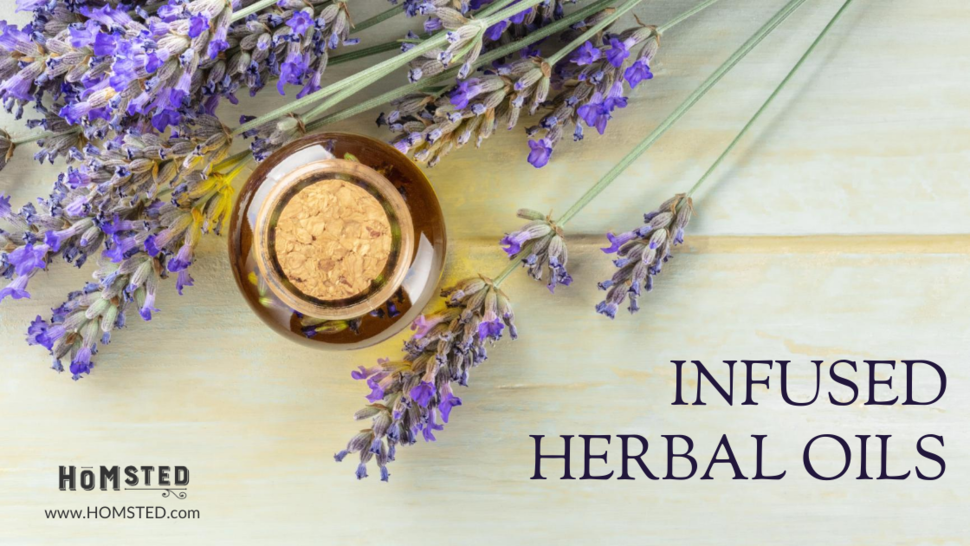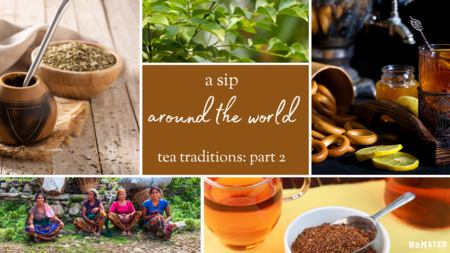How to Make and Herbal Infused Oil

One of the easiest, yet powerful, herbal preparations to make is an infused oil. Infused oils are simply combinations of carrier oils (click on like to find out what a carrier oil is) and herbs. When prepared properly, infused oils impart the beneficial chemistry of herbs into the carrier oil, thus allowing one to utilize an oil for therapeutic use.
Most infused oils are made by a process of maceration. This simple yet effective method is commonly employed in high end body care preparations.
To infuse an oil as a dry plant maceration:
- Simply fill a glass jar with a dried herb (e.g. arnica, comfrey, calendula, rose, lavender)
- Top the jar with a carrier oil
- Let the mixture infuse for some time (3 weeks to a month), while shaking or agitating the jar once a day.
- What is happening during time, is the carrier oil is slowly ‘dissolving’ the chemicals in the herb that are oil-friendly (i.e. lipid soluble).
- After the infusion is complete, simply strain the herb from the oil, filter if desired, and bottle.
Tips :
- A touch of vitamin E oil can be added (at about 1%) if desired to increase the shelf life. Keep in mind, if you avoid getting water in your oils (which is why we only recommend infusing dried herbs), then they generally go bad by oxidizing, rather than rotting. To slow oxidation, antioxidants like vitamin E oil, can help slow this inevitable chemical reaction and extend the shelf life of your oils.
- Some resources recommend the use of heat, or sunlight to expedite the infusion process, but these steps also accelerate the rate of oxidation, sometimes greatly. For this reason, I highly recommend letting oils infuse in dark spaces at room temperature when time allows.
- When making herb-infused oils using dried herbs be sure to always use dry, sterilized jars with tight-fitting lids herbs to reduce the chance of bacteria or mold growth or your oils going rancid.
- When bottling your oil, use colored glass bottles as it can reduce exposure to light, which speeds up the degradation of your oils and herbal properties.
To infuse an oil as a fresh plant maceration:
The biggest issue you have to consider when using fresh plants is the introduction of water into your oil. This can introduce mold and bacteria to your oil and can be dangerous if taken internally. Some plants are more beneficial if used fresh (see list below for some examples).
The best way to make an infused oil with fresh plant is to wilt for several hours or even up to a day. This process helps remove water from the plant. With this reduction in water content, the risk of spoilage is less.
Use the same maceration directions as above when making a fresh except after you wilted your
Tips:
- Once you pour oil over plant be sure to place a boiled stone, fermentation weight, or some sort of sterile object over plant material so it is fully submerged. If the plant that is above the oil surface it has a higher chance of rotting.
- If you notice condensation in your jar then remove the lid and let it evaporate.
- Never take fresh plant infused herbs internally as botulism can grow and can cause a fatal poisoning. They are safe to use externally as long as the user is not sensitive/allergic to any ingredients.
When making infused oils choose herbs that are soothing and tissue healing. Some great herbal choices are:
Calendula: (fresh/dry) wound healing, emollient, antimicrobial
St. Johns wort flower: (fresh) nerve pain relaxing, trauma/burn healing, anti-inflammatory
Yarrow: (fresh/dry) antibacterial, wound healing
Comfrey or Plantain leaf: (fresh/dry) cell regenerative, tissue knitting
Arnica flower: (fresh) anti-inflammatory, muscle pain and bruise reducing
Mullein flower: (fresh) used as an anti-inflammatory, analgesic for ear pain
Marshmallow root: (dried) emollient, tissues healing and soothing
Lavender: (dried/fresh) burn healing, anti-inflammatory




